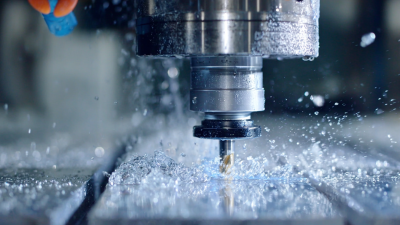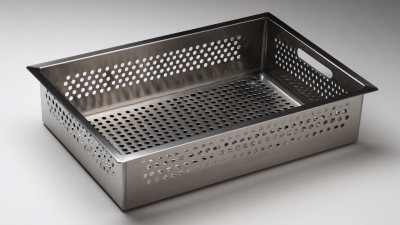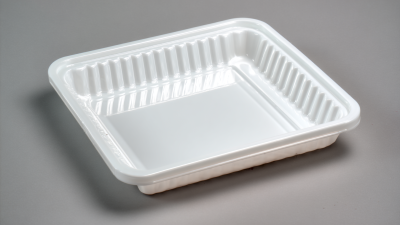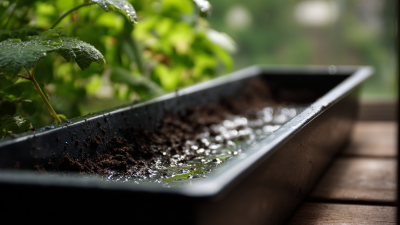Understanding the Importance of Drip Trays in Everyday Appliances and Their Maintenance
 Drip trays are an often-overlooked yet crucial component in various household appliances, playing a vital role in preventing spills, managing condensation, and promoting hygiene. According to a report by the Appliance Manufacturers Association, improper maintenance of drip trays can lead to a 30% increase in appliance malfunction and a significant rise in repair costs. Additionally, the Environmental Protection Agency indicates that over 10% of household water usage is wasted due to leaks and spills, underscoring the importance of effective drip management. Regular cleaning and maintenance of these trays not only extend the lifespan of appliances but also enhance their energy efficiency—critical factors, especially in today's eco-conscious market. Understanding the importance of drip trays can lead to better appliance performance and a more sustainable home environment.
Drip trays are an often-overlooked yet crucial component in various household appliances, playing a vital role in preventing spills, managing condensation, and promoting hygiene. According to a report by the Appliance Manufacturers Association, improper maintenance of drip trays can lead to a 30% increase in appliance malfunction and a significant rise in repair costs. Additionally, the Environmental Protection Agency indicates that over 10% of household water usage is wasted due to leaks and spills, underscoring the importance of effective drip management. Regular cleaning and maintenance of these trays not only extend the lifespan of appliances but also enhance their energy efficiency—critical factors, especially in today's eco-conscious market. Understanding the importance of drip trays can lead to better appliance performance and a more sustainable home environment.
The Role of Drip Trays in Household Appliances
Drip trays play a crucial role in the functionality and maintenance of various household appliances. Commonly found in devices such as refrigerators, coffee makers, and dishwashers, these trays are designed to collect excess moisture and spills, preventing potential water damage to both the appliance and surrounding surfaces. By trapping drips that occur during regular operation, drip trays help ensure that appliances run efficiently and maintain optimal performance.
Regular maintenance of drip trays is essential to ensure they serve their purpose effectively. Neglecting to clean these trays can lead to bacterial growth, unpleasant odors, and even mold, which can compromise the integrity of the appliance. Most drip trays can be easily removed, cleaned, and replaced, allowing homeowners to maintain a hygienic environment. By being aware of the importance of drip trays and incorporating their maintenance into the household cleaning routine, users can prolong the lifespan of their appliances while maintaining overall kitchen health and safety.

Benefits of Using Drip Trays for Preventing Mess and Damage
Drip trays play a crucial role in everyday appliances by helping to catch spills and prevent messes from spreading. They are particularly beneficial in devices such as coffee makers, refrigerators, and dishwashers, where leaks or overflows can lead to significant damage if not contained. By effectively trapping excess liquid, drip trays protect surfaces, maintain cleanliness, and save time on cleanup. This simple yet effective solution not only enhances your appliance's lifespan but also contributes to a more organized kitchen environment.
**Tips for Maintenance:** To ensure your drip trays continue to perform effectively, make it a habit to check and empty them regularly. Turn off the appliance and allow it to cool before cleaning the tray with warm, soapy water. Consider lining the tray with a small, reusable mat that can absorb spills, enabling easier cleanup and safeguarding your appliances from water damage.
Additionally, inspect the trays for any signs of wear or damage. If you notice cracks or holes, it's time to replace the tray to maintain the protective benefits it provides. Keeping your drip trays in excellent condition not only prevents messy accidents but also extends the longevity of your appliances.
Understanding the Importance of Drip Trays in Everyday Appliances and Their Maintenance - Benefits of Using Drip Trays for Preventing Mess and Damage
| Appliance Type | Common Issues Without Drip Tray | Benefits of Drip Tray | Maintenance Tips |
|---|---|---|---|
| Refrigerators | Leaks causing water damage. | Prevents water pooling and protects floor. | Regularly clean tray to prevent odors. |
| Coffee Makers | Spills leading to sticky counters. | Keeps area clean and easy to manage. | Empty and wash tray after each use. |
| Dishwashers | Water accumulation causing leaks. | Minimizes risk of water damage to flooring. | Check and clean tray regularly to ensure drainage. |
| Air Conditioners | Overflow causes mold growth. | Protects surrounding area from moisture damage. | Inspect and clean drip tray quarterly. |
Essential Maintenance Tips for Keeping Drip Trays Functioning Properly
Drip trays are crucial components in various household appliances, ensuring that excess liquids are collected and preventing spills. To maintain their functionality, regular cleaning is essential. It's recommended to inspect and empty the drip tray weekly, especially in appliances like refrigerators and coffee makers where moisture can accumulate quickly. Use warm, soapy water and a soft cloth to wipe down the tray, ensuring you remove any stains or built-up residue that could obstruct drainage.
Another essential maintenance tip is to check for any signs of mold or mildew. If left unattended, these can develop in moist environments, posing health risks and unpleasant odors. A vinegar solution can effectively eliminate mold; simply soak a cloth in the mixture and wipe down the tray. Additionally, always ensure the drip tray is correctly positioned in its designated slot after cleaning, as improper placement can lead to leaks and potential damage to the appliance. Regular maintenance will not only prolong the life of your appliances but also enhance their efficiency.
Common Issues Caused by Neglected Drip Trays in Daily Use
Neglecting drip trays in everyday appliances can lead to a myriad of common issues that not only affect appliance efficiency but also threaten the health and safety of your household. For instance, the buildup of water in uncleaned drip trays fosters mold and mildew growth. According to the Environmental Protection Agency (EPA), indoor mold can trigger various health problems, including respiratory issues and allergies, affecting nearly 2.5 million people in the U.S. annually. This makes regular maintenance of drip trays essential for a healthy living environment.
Additionally, improper drainage from neglected drip trays can cause leaks and water damage, significantly impacting the long-term functionality of appliances. Data from the Insurance Information Institute reveals that water damage accounts for approximately 22% of all homeowner claims, emphasizing the need for proactive drip tray maintenance. Regular cleaning and inspection can prevent clogging and overflowing, which could otherwise lead to costly repairs or replacements. Homeowners should prioritize this often-overlooked component to enhance appliance longevity and safeguard their homes against water-related issues.
Eco-Friendly Drip Tray Options and Their Environmental Impact
Eco-friendly drip trays are becoming increasingly important in both household and commercial appliances, as they play a crucial role in preventing spills and protecting surfaces while also being mindful of environmental impact. Traditional drip trays are often made from plastic, which contributes to the growing problem of plastic waste. According to a report by the World Economic Forum, over 300 million tons of plastic are produced globally every year, with a significant portion ending up in landfills and oceans.
 In contrast, eco-friendly options made from biodegradable materials or recycled composites not only diminish this waste but also maintain functionality.
In contrast, eco-friendly options made from biodegradable materials or recycled composites not only diminish this waste but also maintain functionality.
Recent studies indicate that using drip trays composed of sustainable materials can reduce environmental impact significantly. For instance, a research study published in the Journal of Cleaner Production found that integrating recycled materials into consumer products can lower carbon emissions by nearly 50%. By choosing eco-friendly drip trays, consumers can make a conscious decision that benefits the environment while ensuring that their appliances function efficiently. Additionally, environmentally friendly options often exhibit durability and performance on par with their conventional counterparts, making them a smart choice for both sustainability and utility.
Related Posts
-

Understanding the Process of Vacuum Forming Plastic: A Beginner's Guide
-

Exploring the Future of CNC Machines in 2025 and Their Unmatched Advantages for Global Buyers
-

Exploring the Top Features of the Best Large Drain Pan for Global Buyers
-

Exploring Market Trends for Plastic Drip Trays at the 138th China Import and Export Fair in 2025
-

The Essential Guide to Choosing the Right Drip Trays for Your Home and Garden
-

The Future of Vacuum Forming Machine Technology: Innovations Transforming Manufacturing